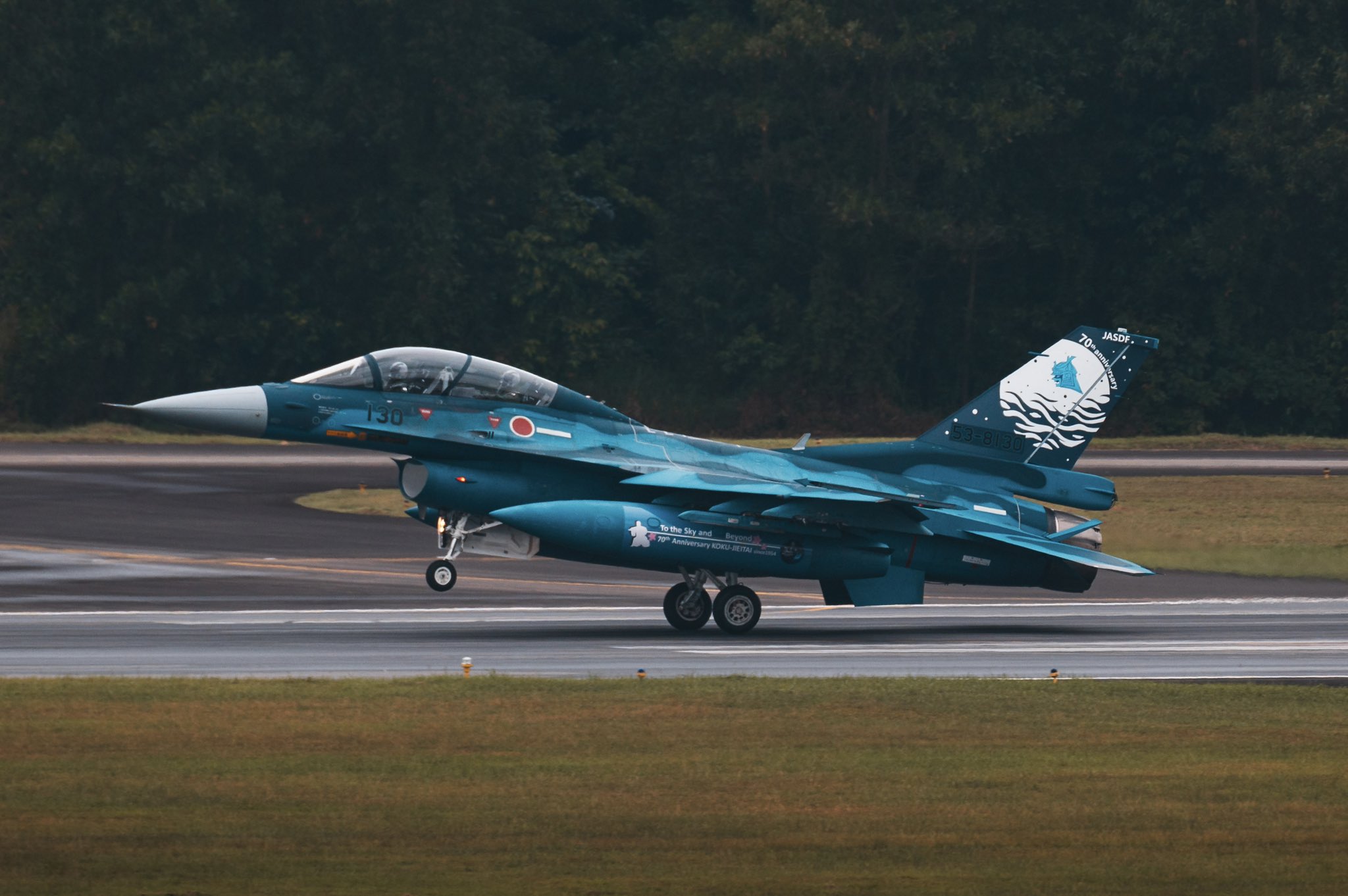On August 27, two Mitsubishi F-2 fighter jets from the Japan Air Self-Defense Force (JASDF) made a brief stopover at Paya Lebar Air Base in Singapore, en route to India. Their destination: the Indian Air Force’s first-ever multilateral Exercise Tarang Shakti. Exercise Tarang Shakti is a multi-phase exercise aimed at enhancing interoperability among participating forces. The first phase, held at Sulur Air Base in Tamil Nadu from August 6 to 16, included France, Germany, Spain, and the UK. The second phase is set to take place at Jodhpur Air Base in Rajasthan from August 29 to September 14, featuring forces from Australia, Bangladesh, Greece, Japan, Singapore, the UAE, and the USA.
The Mitsubishi F-2 is a multirole fighter derived from the General Dynamics F-16 Fighting Falcon, and manufactured by Mitsubishi Heavy Industries and Lockheed Martin for the Japan Air Self-Defense Force, with a 60/40 split in manufacturing between Japan and the United States. The basis of the F-2’s design is the F-16 Agile Falcon, an unsuccessful offer by General Dynamics to provide a low-cost alternative for the Advanced Tactical Fighter (ATF) competition. Production started in 1996 and the first aircraft entered service in 2000. The F-2 is nicknamed “Viper Zero”, a reference to the F-16’s unofficial nickname of “Viper” and the Mitsubishi A6M Zero.


Japan’s military posture is distinctly shaped by its constitution, which states, “the Japanese people forever renounce war as a sovereign right of the nation and the threat or use of force as a means of settling international disputes.” This guiding principle has historically dictated Japan’s defense policies, emphasizing a strictly defensive stance. The constitution further clarifies that “in order to accomplish the aim of the preceding paragraph, land, sea, and air forces, as well as other war potential, will never be maintained. The right of belligerency of the state will not be recognized.”
Consequently, Japan maintains an Air Self-Defense Force rather than a conventional air force, with a focus on defensive capabilities. Offensive capabilities are typically couched in more benign terms (e.g., anti-landing craft instead of anti-ship missiles). Since the end of the Cold War, however, Japan’s defense policies have evolved, driven in part by China’s more assertive regional posture. As a result, Japan has adopted a more proactive stance and increased its cooperation with allied forces. Japanese aircraft have participated in numerous international exercises, including the U.S.-led Red Flag.















